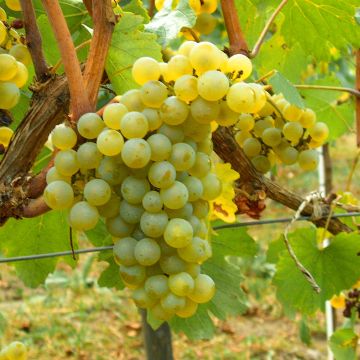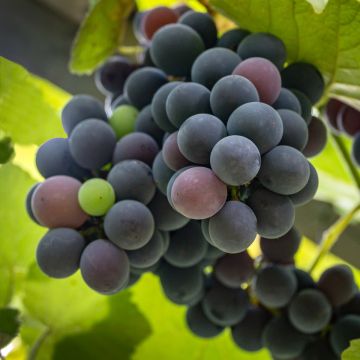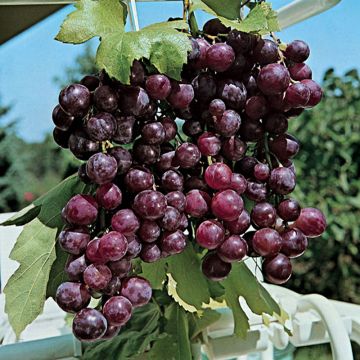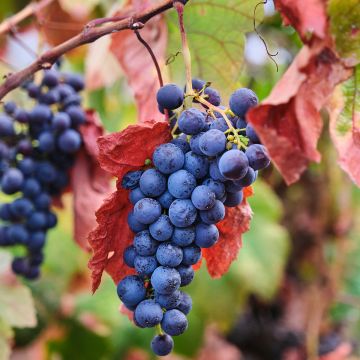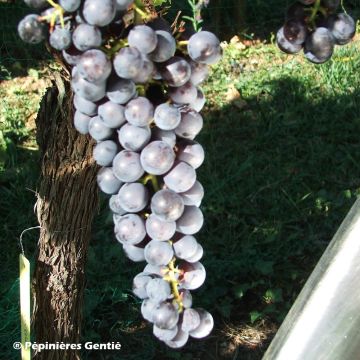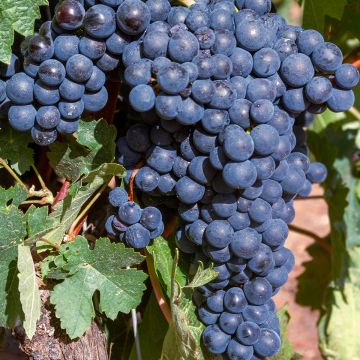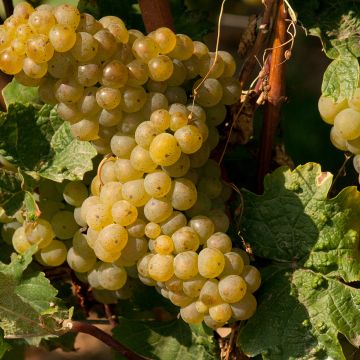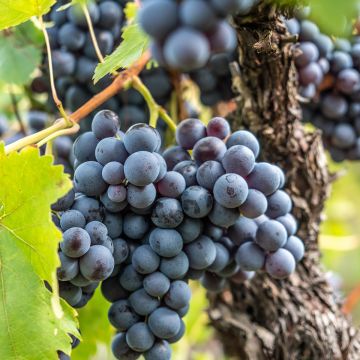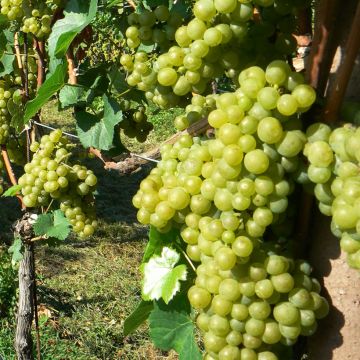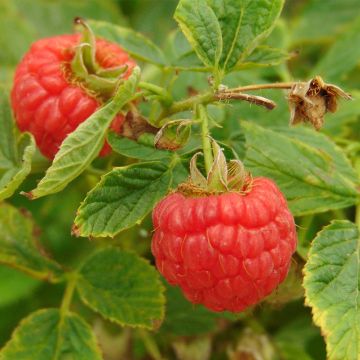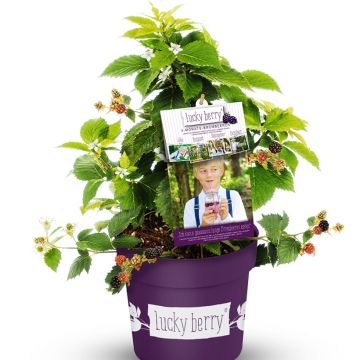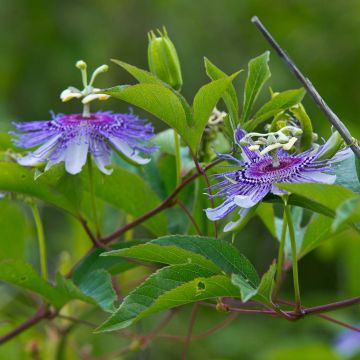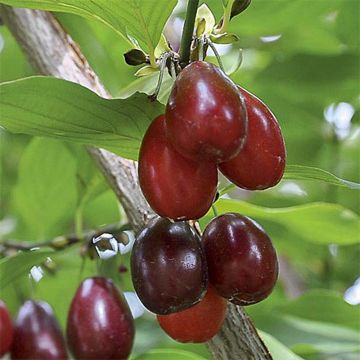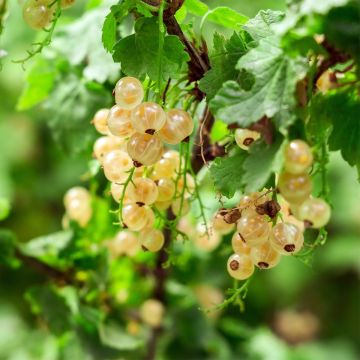

Vitis amurensis Amurensis
Vitis amurensis Amurensis
Vitis amurensis Amurensis
Grape vine
Special offer!
Receive a €20 voucher for any order over €90 (excluding delivery costs, credit notes, and plastic-free options)!
1- Add your favorite plants to your cart.
2- Once you have reached €90, confirm your order (you can even choose the delivery date!).
3- As soon as your order is shipped, you will receive an email containing your voucher code, valid for 3 months (90 days).
Your voucher is unique and can only be used once, for any order with a minimum value of €20, excluding delivery costs.
Can be combined with other current offers, non-divisible and non-refundable.
Home or relay delivery (depending on size and destination)
Schedule delivery date,
and select date in basket
This plant carries a 6 months recovery warranty
More information
We guarantee the quality of our plants for a full growing cycle, and will replace at our expense any plant that fails to recover under normal climatic and planting conditions.
Description
The Vitis amurensis 'Amurensis', the vine of the Amur River, grows in regions with a subarctic climate from the south of the Russian Far East to the north and east of China. It is a vine known for its extreme cold resistance, as well as its fabulous autumn colors. It is highly vigorous and produces a delicious but not very sweet blue-black grape, which yields a tannic and low-alcohol wine. The plant blooms in May-June and its fruits ripen in September-October depending on the climate. It is particularly suited to regions with long cold winters and short hot summers, thriving in deep, clay-limestone soil that is not too dry, in a sunny location. It is highly resistant to common vine diseases.
The vine of the Amur River, from the vitaceae family, is a climbing plant that grows in woods and shrub thickets, able to reach up to 8 m (26ft) in trees. Its distribution area corresponds to regions in China, Japan, Korea, and Siberia that experience a very harsh continental climate. It is an exceptionally robust plant, with rapid growth reaching heights of 6-8 m (20-26ft), with annual growth of up to 2 m (7ft). In spring, its red-coloured young shoots are decorative, as are the young leaves, which are fuzzy and slightly silver. Adult leaves are wide, ovate, with 3 to 5 lobes and can measure up to 25 cm (10in) in diameter. In autumn, the foliage turns red, scarlet, and purple before falling. This vine climbs using tendrils. It blooms from May to July depending on the climate. Its small yellowish-green flowers are nectar-rich, attracting bees and many pollinating insects. The fruiting takes the form of small clusters of grapes that turn blue-black when ripe. Each grape measures between 1 and 1.5 cm (0 and 1in) in diameter. They can be eaten as they are, but they are best prepared as jelly or jam. The fruits will be more flavourful and sweet if the plant is grown in slightly moist, clayey, fertile, and calcareous soil. A sunny and warm exposure is necessary for fruit ripening. The Vitis amurensis is naturally highly resistant to anthracnose, resistant to powdery mildew, and less susceptible to phylloxera than our Vitis vinifera.
Highly vigorous, the Vitis amurensis can colonise a trellis, a large wire fence, a hedge, or a pergola. It can be associated with golden hops or with the Coignet vine (Vitis coignetae), for example. This allows one to enjoy the beauty of its foliage, its autumn colours, and its lovely clusters of black grapes. They can be consumed as juice, or in a vitamin-rich fruit cocktail for breakfast. In China and Eastern countries, they are used in winemaking. In general, grapes are rich in vitamins B, a source of dietary fibre and manganese, and are well-supplied with antioxidants. To vary your enjoyment, discover our other grape varieties and climbing vines.
Report an error about the product description
Vitis amurensis Amurensis in pictures
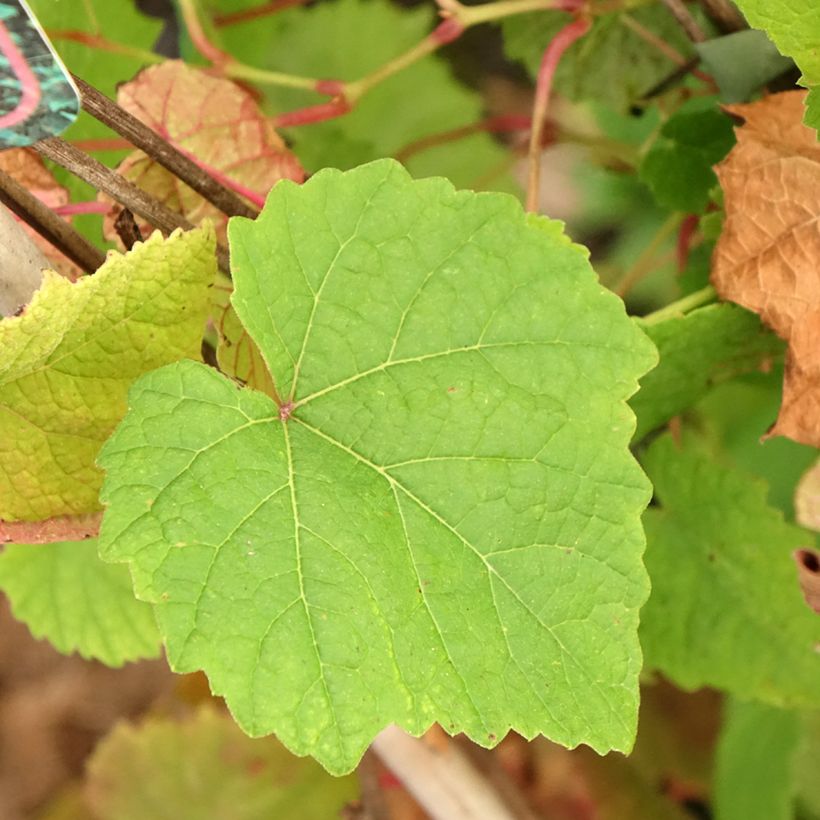

Plant habit
Fruit
Flowering
Foliage
Botanical data
Vitis
amurensis
Amurensis
Vitaceae
Grape vine
Russia
Other Grapevines
View all →Planting and care
Plant the Amur river grapevine in autumn or late winter, in a deep, well-drained, preferably clayey and limestone soil, knowing that the vine is not very demanding in terms of the chemical nature of the soil. It is capable of adapting to moderately acidic soil (up to pH 6, as below that there are assimilation blockages of certain trace elements), neutral and limestone up to pH 8.5 approximately.
Plant it in a sunny location, sheltered from strong, cold and dry winds. This variety can withstand freezing temperatures in winter, it is hardy up to -40°C (-40°F). Incorporate 3 or 4 handfuls of fruit tree fertiliser and 2 kg of composted manure for each plant into the planting soil. Be careful, the roots should not come into contact with the manure. After planting, prune above 2 large buds to encourage the growth of two branches. Keep the most vigorous one and tie it to a stake. This will be followed by training pruning.
The vine does not require regular fertiliser application for good yields, on the contrary. In overly rich soil, vegetative growth (leaves) will develop at the expense of fruiting. Enrich the soil with potash slag, crushed horn or iron chelate, only every 2-3 years. This vine is known to be highly resistant to diseases, especially the dreaded mildew.
Planting period
Intended location
Care
This item has not been reviewed yet - be the first to leave a review about it.
Similar products
Haven't found what you were looking for?
Hardiness is the lowest winter temperature a plant can endure without suffering serious damage or even dying. However, hardiness is affected by location (a sheltered area, such as a patio), protection (winter cover) and soil type (hardiness is improved by well-drained soil).

Photo Sharing Terms & Conditions
In order to encourage gardeners to interact and share their experiences, Promesse de fleurs offers various media enabling content to be uploaded onto its Site - in particular via the ‘Photo sharing’ module.
The User agrees to refrain from:
- Posting any content that is illegal, prejudicial, insulting, racist, inciteful to hatred, revisionist, contrary to public decency, that infringes on privacy or on the privacy rights of third parties, in particular the publicity rights of persons and goods, intellectual property rights, or the right to privacy.
- Submitting content on behalf of a third party;
- Impersonate the identity of a third party and/or publish any personal information about a third party;
In general, the User undertakes to refrain from any unethical behaviour.
All Content (in particular text, comments, files, images, photos, videos, creative works, etc.), which may be subject to property or intellectual property rights, image or other private rights, shall remain the property of the User, subject to the limited rights granted by the terms of the licence granted by Promesse de fleurs as stated below. Users are at liberty to publish or not to publish such Content on the Site, notably via the ‘Photo Sharing’ facility, and accept that this Content shall be made public and freely accessible, notably on the Internet.
Users further acknowledge, undertake to have ,and guarantee that they hold all necessary rights and permissions to publish such material on the Site, in particular with regard to the legislation in force pertaining to any privacy, property, intellectual property, image, or contractual rights, or rights of any other nature. By publishing such Content on the Site, Users acknowledge accepting full liability as publishers of the Content within the meaning of the law, and grant Promesse de fleurs, free of charge, an inclusive, worldwide licence for the said Content for the entire duration of its publication, including all reproduction, representation, up/downloading, displaying, performing, transmission, and storage rights.
Users also grant permission for their name to be linked to the Content and accept that this link may not always be made available.
By engaging in posting material, Users consent to their Content becoming automatically accessible on the Internet, in particular on other sites and/or blogs and/or web pages of the Promesse de fleurs site, including in particular social pages and the Promesse de fleurs catalogue.
Users may secure the removal of entrusted content free of charge by issuing a simple request via our contact form.
The flowering period indicated on our website applies to countries and regions located in USDA zone 8 (France, the United Kingdom, Ireland, the Netherlands, etc.)
It will vary according to where you live:
- In zones 9 to 10 (Italy, Spain, Greece, etc.), flowering will occur about 2 to 4 weeks earlier.
- In zones 6 to 7 (Germany, Poland, Slovenia, and lower mountainous regions), flowering will be delayed by 2 to 3 weeks.
- In zone 5 (Central Europe, Scandinavia), blooming will be delayed by 3 to 5 weeks.
In temperate climates, pruning of spring-flowering shrubs (forsythia, spireas, etc.) should be done just after flowering.
Pruning of summer-flowering shrubs (Indian Lilac, Perovskia, etc.) can be done in winter or spring.
In cold regions as well as with frost-sensitive plants, avoid pruning too early when severe frosts may still occur.
The planting period indicated on our website applies to countries and regions located in USDA zone 8 (France, United Kingdom, Ireland, Netherlands).
It will vary according to where you live:
- In Mediterranean zones (Marseille, Madrid, Milan, etc.), autumn and winter are the best planting periods.
- In continental zones (Strasbourg, Munich, Vienna, etc.), delay planting by 2 to 3 weeks in spring and bring it forward by 2 to 4 weeks in autumn.
- In mountainous regions (the Alps, Pyrenees, Carpathians, etc.), it is best to plant in late spring (May-June) or late summer (August-September).
The harvesting period indicated on our website applies to countries and regions in USDA zone 8 (France, England, Ireland, the Netherlands).
In colder areas (Scandinavia, Poland, Austria...) fruit and vegetable harvests are likely to be delayed by 3-4 weeks.
In warmer areas (Italy, Spain, Greece, etc.), harvesting will probably take place earlier, depending on weather conditions.
The sowing periods indicated on our website apply to countries and regions within USDA Zone 8 (France, UK, Ireland, Netherlands).
In colder areas (Scandinavia, Poland, Austria...), delay any outdoor sowing by 3-4 weeks, or sow under glass.
In warmer climes (Italy, Spain, Greece, etc.), bring outdoor sowing forward by a few weeks.






























